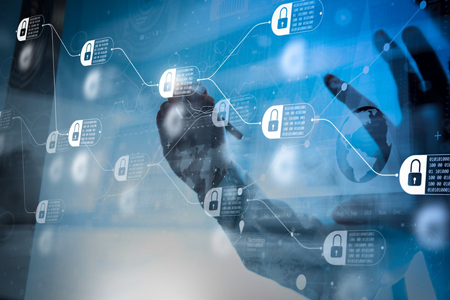What Is Blockchain, and Why Do You Need to Know What It Is?

TECHNOLOGY
When Bitcoin first came onto the scene in 2008, it came with a new underlying technology called “blockchain.” As interest in cryptocurrencies grew, so did special recognition for the technology that made them work. Since then, blockchain has grown to be used in many different industries – making it possibly the next big revolution in the digitization of business.
Blockchain defined
Blockchain represents not just a new technology, but also an important new construct for recording data. And it’s gaining momentum as a transparent, immutable and secure method of recording business transactions.
At its rudimentary core, blockchain is the finite organization of digital data into a series of blocks. These blocks are then digitally and chronologically connected together into a chain. Each block contains a unique set of data, and is comprised of three components:
- First, it contains specific, and usually transactional, details such as dates, quantities and dollar amounts.
- Second, it contains information, in the form of digital signatures, about who is involved in the transaction.
- Finally, a unique identifier (called a “hash”) is assigned to reference the specific block.
These hashes are actually cryptographic codes generated via algorithms. They are dependant on the data in the block and make reference to the block before them. These elements make each hash unique to each block. As data is added or changed, new blocks are added to the chain. It is important to note that the data in a particular block is never changed; erroneous or new data simply adds a new block to the chain. As a result, there is always a complete record of the data, right from its origins.
Blockchain also differs from traditional data recording methods in terms of how the data is stored. The chains are essentially digital ledger systems that are then stored across a wide range of networks (making them often referred to as a “distributed ledger”). Anyone can view the contents of a blockchain and, if they so desire, can have their computer added as a node to the chain. From that point on, their computer will receive a copy of the entire chain every time the blockchain is updated.
This is the main reason why blockchains are considered so secure: In order to modify the data in a particular block, that block would have to be changed on every system where the ledger existed – which creates a significant barrier to malicious intent. Imagine a particular block that is the target of malicious intent. That block would have to be manipulated on literally thousands of nodes (individual computers) for the threat to take affect.
Uses of blockchain
Blockchain was initially developed as a ledger system for Bitcoin. To this day, many people still incorrectly refer to blockchain and Bitcoin interchangeably. Given the inherent features of transparency and security, blockchain has easily lent itself to many other uses. It has been employed in healthcare centres for patient medical records; by food manufacturers as a means of keeping lot, batch and ingredient data; and even in the finance industry to track fraud. The list continues to grow.
One of the recent important modifications is how the blockchain is accessed. While one of the defining aspects of the technology is that it is public and fully accessible, more private chains have gained popularity. These new permissioned blockchains work just like their predecessors, except that the access to the network where they reside is controlled. Organizations can then grant access only to the individuals or entities they want to include. These forms of blockchain are expected to grow significantly as organizations test this new technology’s effectiveness.
What does this mean to you?
As noted, blockchain represents a new way of recording the interactions (transactions) between individuals and organizations. As this new technology becomes more popular and utilized, questions have emerged as to what the future holds for this new way of transacting.
While the inherent benefits of a system that is transparent, secure and immutable are exciting, conversion to it will still take some time. Unlike many other technological enhancements, blockchain represents not a disruptive technology, but rather a foundational shift. Its advantages will take time to become part of the economic infrastructure. In large part, this evolution will depend on how blockchain is taken up by enterprise.
Key questions for finance and accounting professionals relate to how this technology can withstand audit and assurance challenges. It will be some time before blockchain replaces audited financial statements, but it will increasingly be used to record transactions. As such, it is imperative that these professionals gain an understanding of the system. And while it does record transactions in a new way, auditors will still need to assess whether those transactions were correctly categorized on the financial statements and whether they were authorized, fraudulent, or even illegal.
As technology continues to advance, and business processes continue to be digitized, it is increasingly important to monitor these advances and continually assess their impact on your industry. Blockchain is a key player in this trend that won’t be disappearing anytime soon. Whether your business is a technology giant, an accounting firm or a professional organization, it is increasingly important to monitor these advances and continue to assess their impact on your industry.
Disclaimer
The information provided on this page is intended to provide general information. The information does not take into account your personal situation and is not intended to be used without consultation from accounting and financial professionals. Allan Madan and Madan Chartered Accountant will not be held liable for any problems that arise from the usage of the information provided on this page.


SOCIAL CONNECT